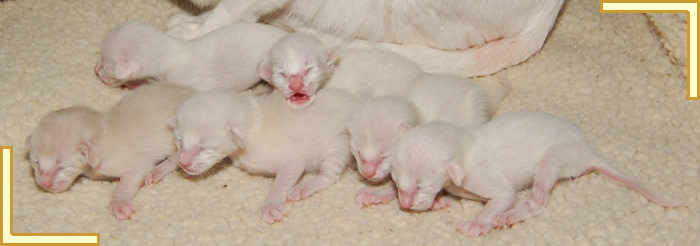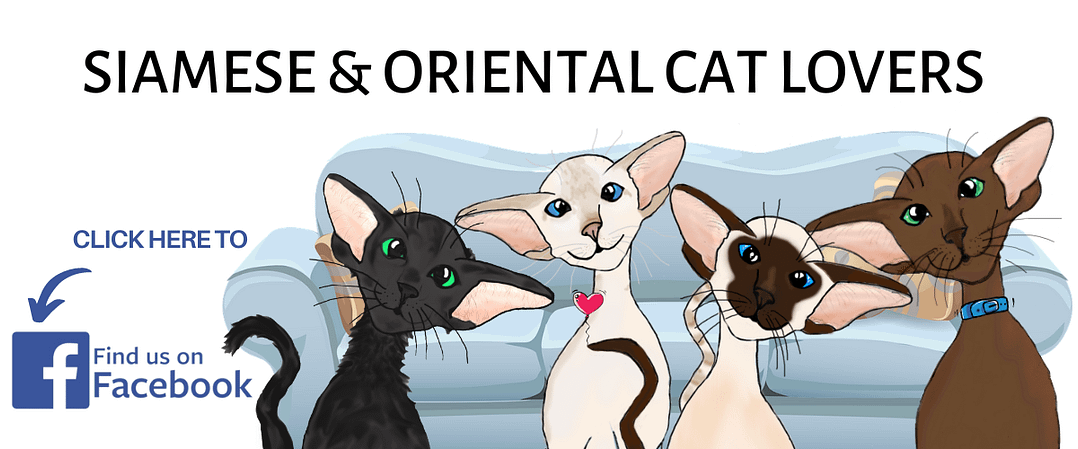An overview of some feline genetic diseases and DNA testing associated with Siamese cats.

Cats are amongst the most popular house hold pets, especially in Europe and Northern America. In the USA, 30.4% of households own a cat and in the UK the figure stands at around 19%. An article by Jennifer Viegas, one of Discovery News’ first reporters, highlights the strong affectional bond exhibited between humans and cats and how closely these bonds resemble those between humans. Further to this, researchers have also made an analogy between the control babies have over their parents and a similar control which cats can, to some extent also exert on their owners[1]. Among all the species, Siamese cats are amongst the most intriguing, they show loyalty and other peculiar characteristics which distinguish them from other cat breeds. Thus before owing a Siamese cat, it may be a good idea to carry out some research to understand the idiosyncratic nature of these special feline friends, their activities as well as their behavior.
- Like most living creatures, cats have all their genes neatly packed into structures we call “chromosomes”. Siamese cats have total 38 chromosomes unlike humans that have 46. As in most animals, the shape and paring of the chromosome determines the sex. Females have 19 pairs of X chromosomes as compared to males that have 19 pairs of XY chromosomes. It is the male that determine the gender of the offspring.
- Like rabbits, mice and rats, Siamese cats also have what is known as the Himalayan gene. This gene basically controls the amount of pigment or colour in the body; it is the gene which also makes Siamese cats partial Albinos. Siamese are special because of the considerable range of colours they have; cream, cinnamon, pale lilac and many more. Black coloured Siamese cats that are referred to as “seal”, have the complete Himalayan gene as compared to other cats. They are not actually black but usually a very dark shade of brown which makes them appear black. The Himalayan gene is not dominant but recessive. This means that in order to manifest itself, two copies must be inherited (in other words, both parents must be Siamese).
Feline Genetic Diseases:
Many diseases are genetically linked. Certain mutations on specific genes may lead to the development of a certain disease. Genetic diseases, for example cancer, may sometimes be hereditary and thus, offspring whose parent/s has the cancer gene may inherit the gene mutation responsible for the disease in question. Other genetic diseases (including cancers) may develop sporadically. This means that for some reason a random mutation occurs at some point in the cat’s life which causes the disease to set in.
Genetically inherited conditions are more common in pure bred cats, such as Siamese cats, then in mixed breed cats. In Siamese cats, disorders are mostly related to skin diseases, reduced amount of hair, coat colour, breeding issues and the other more serious conditions such as cancer or congenital heart problems. The most common forms of cancer in Siamese cats are those of the breast (affecting Siamese cats almost twice as frequently as other breeds), the mouth, skin and digestive system.
Specific Disease To Siamese And Asian Cats:
Siamese and Asian cats have more breed-specific health and behavioral related issues as compared to other cats. They in fact have a higher probability of developing asthma as well as suffering from a condition which causes the loss of fur known as Alopecia.
Some other disease found in Siamese are listed below:
- Due to hormone imbalances and gene mutations or abnormalities, specifically female cats, may have a problem in which they have what is known as “the halo appearance around the eyes”. The condition is known as Bilaterial periocular leukotrichia and is often seen in pregnant cats or cats with a systemic illness.
- Another condition which can affect skin and fur colouration is known as unilateral periocular depigmentation. It is associated with “Horner’s Syndrome” and known as “Vitiligo” disease. It leads to discolouration of fur and coat.
- Gangliosidosis is a genetic and hereditary, lipid disease, which although rare, may affect Siamese cats. Gangliosides are essentially complex lipids and the disease results in an abnormal accumulation of these lipids throughout the nervous system.
Significant Health Risk
One of the major health risks seen in Siamese cats is “Progressive Retinal Atrophy (PRA)”. The condition affects the eye retina and is extremely serious as it leads, almost invariably to blindness. The disease is genetic and also hereditary. It is widely observed in the Somali and Ocicat breeds. In this disease, photoreceptors are damaged which become one of the main reason for night blindness and ultimately when cat reaches at the age of 3 or 5 years, it becomes totally blind. Feline DNA tests for this specific disease are today available. The test result will tell you whether your cat is simply a carrier of the gene, is actually affected by the disease or free of the gene and thus, fit for mating.
How To Get Information About Autosomal Recessive Disorders?
In order to get adequate information of the autosomal disorder, numerous DNA tests are available for cats depending on the breed. This helps cat breeders make selection breeding choices and pick the cats with the healthiest genes. This means that when they come to sell their cats, they can guarantee and reassure their buyers that the cat they are buying does not suffer from any genetic disease and will not have health problems later on.
For the collection of samples, epithelial cells (check cells) need to be collected from the inside of the cheeks. Normally, the sample can be collected using an oral swab which needs to be rubbed inside the mouth of the cat. Collecting cat DNA samples in this way is entirely painless, although it may be tricky to get them to stay still whilst you insert the swab. Once inside the mouth, you need to rub it for around ten seconds and then allow the swab to dry.
Parentage Testing
Cat breeders often resort to DNA testing for parentage reasons. There may be cases where they are unsure of which cat sired a litter of kittens. This may compromise the quality of the pedigree certificate. A cat’s biological parents can be confirmed via DNA testing. The DNA profile of a kitten can be compared with that of the alleged sire to see if there is a match. A match would confirm that the tested cat is the biological parent of the kitten or kittens in question. This parentage test might be especially useful when breeders use multiple sire mating. The sire of each kitten or litter of kittens can only accurately be confirmed with a DNA test.
The DNA profile can also be used as a permanent animal identification record. This is indeed useful if your pet goes missing or stolen. It could help you accurately identify your pet should it be lost or stolen and found at a later date.
Bio
Caroline Hughes is an online writer specializing in writing about genetics. The author regularly contributes to many online blogs and websites delving into various, related topics including forensic testing, genetic sampling information about genetic illnesses and health tests. Many of the articles, resources and information written by the author can be found at: easyDNA UK
[1] Viegas Jennifer, Cats Adore, Manipulate Women, (24/02/2011), Article can be found at [https://news.discovery.com/animals/zoo-animals/cats-humans-pets-relationships-110224.htm]

